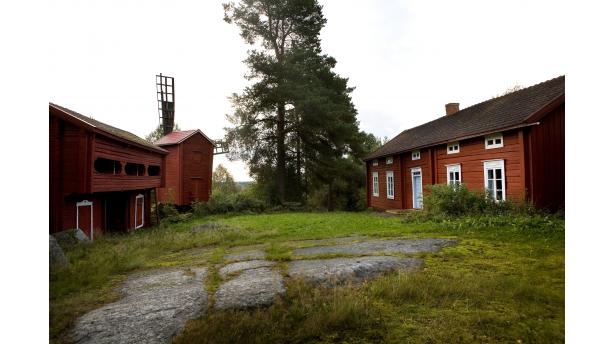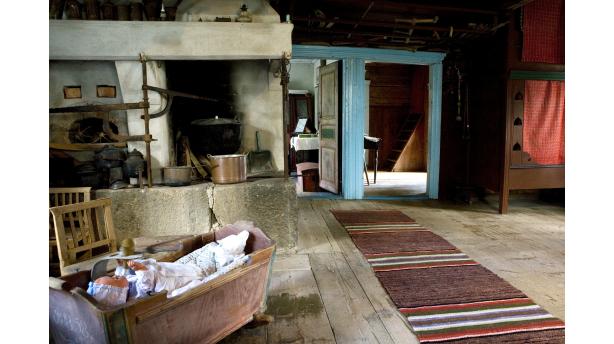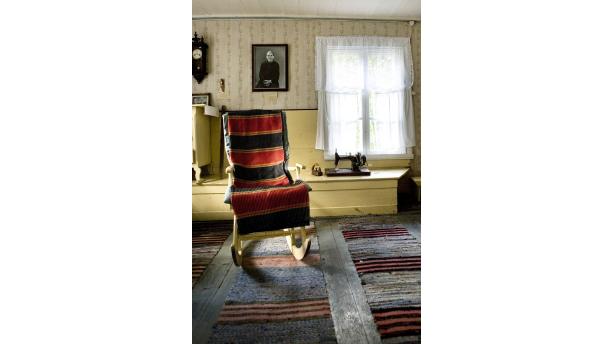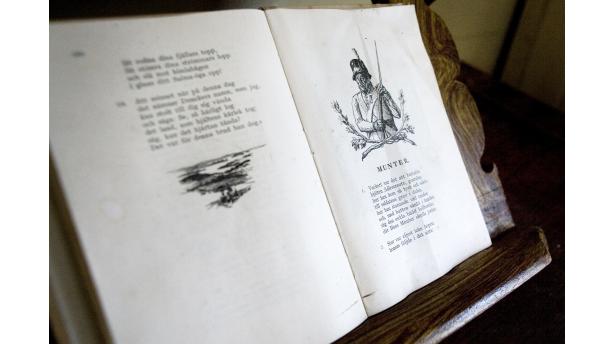Museum A-Ö » Rejpelt Fädernegård
Rejpelt Fädernegård




Did you know...
The door and window frames of the cottage have been painted with a special blue shade, which can’t be found in many cottages in Ostrobothnia.
On the Rejpelt Fädernegården the visitor gets an idea about country life at the end of the 19th century. The cabin’s interior, which is typical for the period, offers the framework for exploring local historical items. The girls’ barn with its colourful textiles is also truly worth a visit. In the proximity of the museum is the Munter’s soldier cottage, which is connected to The Tales of Ensign Ståhl.
Fädernegården is a typical Ostrobothnian double cabin, built in 1852. The house was relocated on the area in the 1950s and the museum area has been constructed on the model of a peasant house with its lofts and barns. All of the museum’s buildings originate from Rejpelt, except for the windmill, which has been transferred from Korsnäs. Two families dwelled in the double cabin, each in their own cabins. One of the cabins has been furnished as a typical late 19th century home, and there is an open fireplace, a balcony bed with a plate shelf in one end, as well as a colourful corner cupboard in the cabin. One of the walls is embellished with a picture, which has a Biblical sentence embroidered on it. Similar pictures can also be found in the other cabin, where the beautiful collection of furniture includes for instance chairs and cupboards and wind instruments of the Rejpelt village brass band.Among the museum’s pearls is the girls’ barn, where on display are colourful and striped as well as monochrome textiles. The clothes, the shawls, the blankets, the bedsheets etc. have been received as donations from the region, and there is often a hint of red in the fabrics. There is also a quilt from Vörå in the shades of green and red in the collection. The unmarried girls of the region resided in the loft building during the summer. Their clothes, bedlinens and trousseau trunks were stored there.
In the other barn is a complete shoemaker’s workshop with its tools and raw materials. The shoemaker’s workshop was originally located in another village in Rejpelt. There could be 3 or 4 shoemakers in one village, but the shoemaker could also go from house to house with his shoemaker’s equipment.
In the proximity of the museum is the Munter’s Soldier Cottage, which is associated with J.L. Runeberg’s Tales of Ensign Ståhl. The last resident of the cottage was primary school teacher Maria Munter, who dwelled in the simple croft up to the age of 96. She also served as a maid in the peasant house next to the croft. The interior of the cottage is the same as it was, when Maria died in 1972. Maria’s maternal great-grandfather Johan Munter was soldier number 80 in the lifeguard company of the Royal Ostrobothnian Regiment. Munter died in the Finnish War in 1808. He is likely to have been residing in the soldier cottage. It is believed, that Johan Munter was the exemplar of the soldier with the same name in J.L. Runeberg’s Tales of Ensign Ståhl.
During the Vörådagarna (Vörå Days) a dance is arranged in the vicinity of the museum and the museum is open in the evening. Fädernegården is also a suitable excursion destination for school classes, who want to learn more about the old time way of life in their home region.



